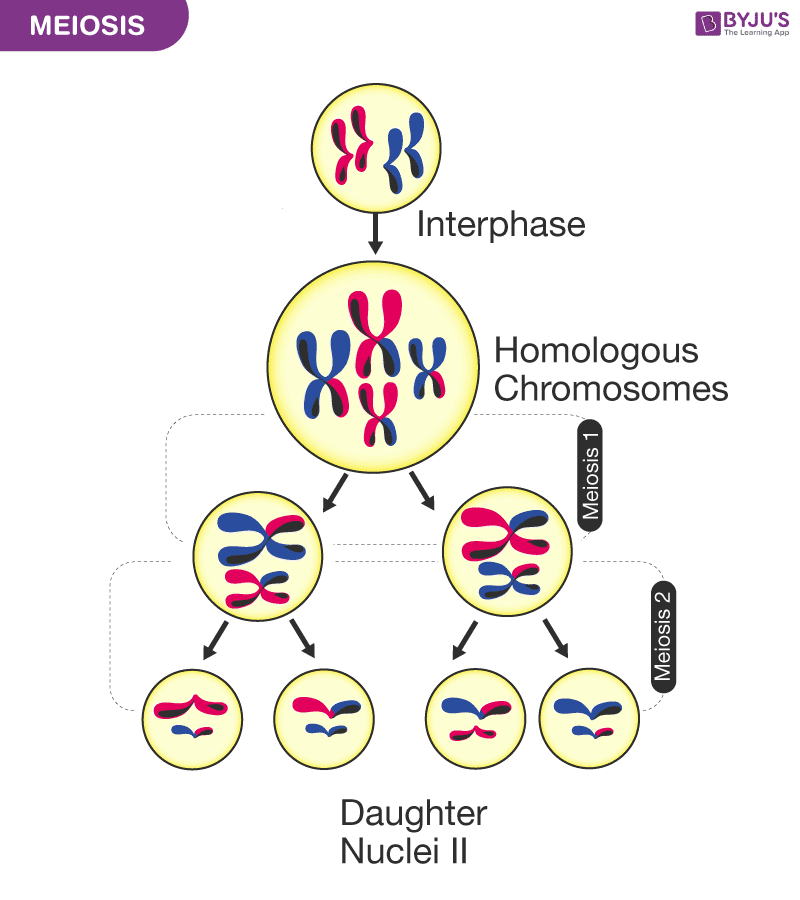Meiosis is a type of cell division in which a single cell undergoes division twice to produce four haploid daughter cells. The cells produced are known as the sex cells or gametes (sperms and egg).
The diagram of meiosis is beneficial for class 10 and 12 and is frequently asked in the examinations. The diagram of meiosis along with the explanation of its different stages is given below in detail.
Further Reading:
Well-Labelled Diagram for Meiosis

Meiosis I
Prophase I
Here, the chromosomes begin to condense. Prophase I is divided into five different stages:
- Leptotene
- Zygotene
- Pachytene
- Diplotene
- Diakinesis
Metaphase I
The homologous pairs of chromosomes are aligned on the equatorial plate.
Anaphase I
The homologous chromosomes are pulled on the opposite poles. The sister chromatids remain attached to each other.
Telophase I
The nuclear membrane reforms and chromosomes decondense.
Cytokinesis I
The cell divides into two haploid daughter cells.
Meiosis II
Prophase II
Chromosomes condense and nuclear envelope breaks.
Metaphase II
The non-homologous chromosomes aligned on the equatorial plate.
Anaphase II
Sister chromatids move to opposite poles.
Telophase II
Chromosomes decondense and nuclear membrane reforms.
Cytokinesis II
The cell divides into four haploid daughter cell.
For more information on mitosis, diagram of meiosis or other related topics, keep visiting BYJU’S website.
This is a very helpful app
I want to continue my studies in byjus aap